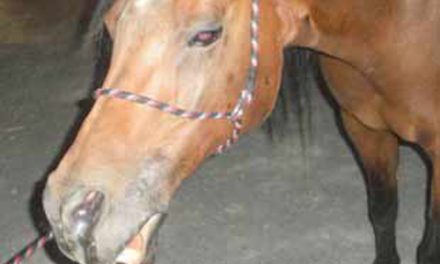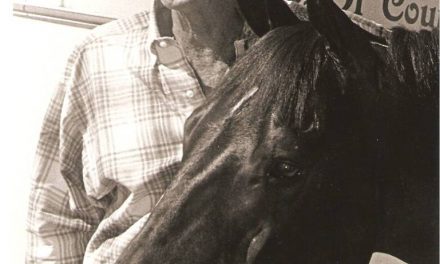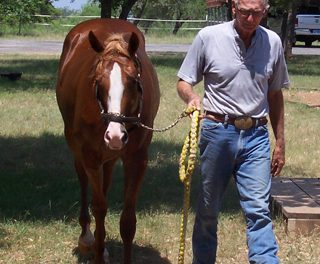A Horse, Of Course
I guess one horseman or another has been saying that since man first tried to ride the horse and quickly discovered there’s got to be a better way.
Every time I see riders (sometimes calling themselves “trainers”) spurring, whipping, jerking, pulling and punishing, I say, “There’s got to be a better way”.
So if there’s a better way, what is it and where is it?
It’s really easy to tell you what it is. (Horsemen have been telling us for more than 2,500 years.)
The hard part is convincing you it is just beyond the insidious, “I agree, but….” (No one wants to be told they are using excuses to avoid the issue.)
Let’s start at the beginning. More than 2,500 years ago the Hittites left us a partial horse training manual. What the Hittites discovered was mankind has the ability to teach a horse a communication system by which mankind can solicit a specific performance from the horse. The Hittites did not advocate the use of force or special equipment. (The equipment was crude and pretty rude, but got the job done.)
Primarily, the Hittites explained, basic cues taught slowly and with plenty of practice result in good performance. Now there’s an idea that is going to seem too radical for a lot of today’s trainers.
And how are so many of today’s horsemen going to react to Xenophon’s observation 2,400 years ago, that it is not the bit which is cruel or gentle, but the rider’s hands. Just imagine how difficult a concept that is to grasp. And think about the 10,000 full-color advertisements with endorsements by name trainers claiming “it’s the bit, it’s the splint boots, it’s the vitamin supplement.”
After Xenophon, it is one master horseman after another, offering help in understanding the horse, help in mastering techniques of communication, help in developing the individual’s unique talents which result in innovations of style and horsemanship.
So, the better way is there. It’s been explained, and reviewed, and offered in different languages and is demonstrated by those whose passion is the horse. It’s yours for only a tiny bit of effort.
Unfortunately it is not seen everywhere, nor all the time. Quite the contrary, it is seldom seen, anywhere.
It’s hiding behind, “I agree, but….”
“I agree, but” are the words used right after all the highest standards are claimed. “I agree, but” are words a horseman uses to try to fool you into thinking he’d really like to practice a better way. “I agree, but” is the excuse offered to avoid a tiny bit of effort.
Worst of all, “I agree, but” are words given to protect the ego and keep the speaker wrapped in the warm approval of all the other horsemen who say, “I, agree, but…”
There are so many convenient excuses for not finding a better way, that it is a wonder anyone tries.
It’s hard to establish a workable communication system with a horse.
It’s hard not to use force. It’s hard to ignore merchandising claims of a magic cure.
It’s hard to see the wrong things emerging victorious.
It’s hard to watch judges claim to want one thing, then reward just the opposite.
It’s hard to see breed associations bend the rules, ease the rules and change the rules to make things more convenient for those who are more interested in profits and results than horses.
So why not say, “I agree, but”?
Because you have the creative potential to find a better way, without the gimmicks, without the force, without the specialized equipment and without the compromised standards.
Because I believe in you.
Because there is a better way.
Start your journey on learning a better way to train horses, enroll in the online course, Training Performance Horses, written by the late Don Blazer, and taught by World Champion trainer Cathy Hanson. Visit www.equinestudiesinstitute.com to earn certification as a horse trainer, riding instructor or stable manager.




